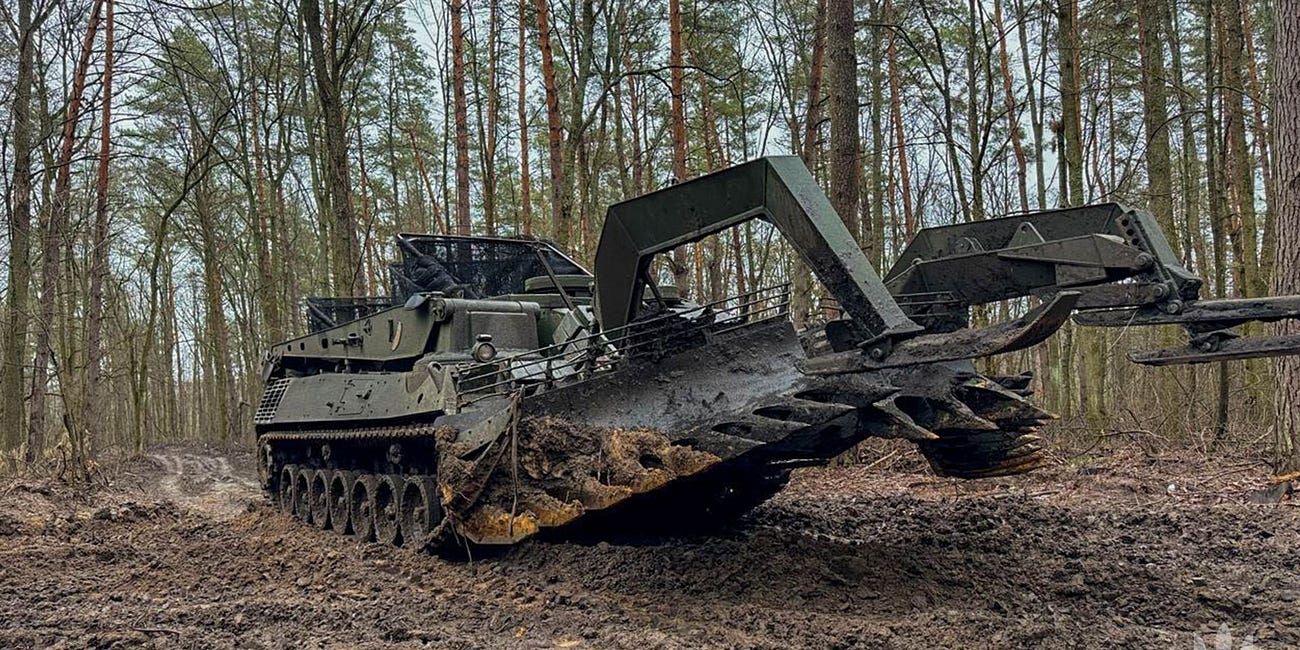On the Same Day, Russia and Ukraine Destroy Each Other's Best Rocket Launchers: Scratch 1 HIMARS and 1 KN-09
A Ukrainian HIMARS blasted a KN-09 while another HIMARS ate a Russian drone
Russia and Ukraine swapped hits on their best rocket launchers on or just before Tuesday.
A Russian fiber-optic drone blew up a Ukrainian High-Mobility Artillery Rocket System, the fourth Ukraine has lost. Meanwhile, a Ukrainian HIMARS hit (for the first time, it seems) what appeared to be a North Korean-made KN-09—Pyongyang’s answer to the American launcher, copies of which the regime of North Korean strongman Kim Jong Un have pledged to the Russian war effort alongside other equipment and thousands of troops.
How each side struck the other’s launcher speaks the dynamics of Russia’s wider war on Ukraine as it grinds into its 39th month. Three dozen surviving U.S.-made HIMARS remain Ukraine’s best weapons for precision strikes as far as 57 miles behind the front line. The Russians for their part are leaning more heavily on jam-proof fiber-optic drones for counterbattery missions.
To be fair, analyst Jakub Janovsky believes the launcher the Ukrainians struck in western Russia’s Kursk Oblast was a Russian Uragan-1M, not a KN-09. (See video below.) Regardless, the vehicle was around 18 miles northeast of the border village of Tetkino when it was hit. Tetkino, a frequent target of Ukrainian air force glide-bomb raids, is where Ukrainian forces launched their latest incursion into Kursk in recent days.
The KN-09 was a clear threat to Ukrainian raiders. The system, one of the newest in the North Korean and Russian inventories, fires 300-millimeter precision-guided rockets as far as 120 miles. Why the launcher was so close to the fighting is unclear, although it’s possible the crew had been targeting Ukrainian forces on the far side of the border.
In any event, its proximity to Ukrainian rocket artillery, and the drone teams that help to cue the artillery, doomed the KN-09—or Uragan-1M, if that’s what it was.
Never shoot and scoot
The Ukrainian HIMARS the Russians struck (see video at top) itself was traveling with an escorting vehicle along a main road just six miles from the front in Donetsk Oblast—and in broad daylight.
That exposed the launcher to jam-proof fiber-optic drones operated by Rubicon, possibly Russia’s best drone formation—the same one that cut Ukrainian supply lines into Kursk back in February, ultimately forcing out a large Ukrainian force that had occupied part of the oblast for six months.
The HIMARS crew and their commanders should’ve known better than to take to the roads in daytime and without heavier protection. “Not even HIMARS is safe when shooting and scooting,” analyst Andrew Perpetua stressed, referring to an outdated practice whereby artillery batteries fire a few rounds and then immediately reposition to avoid return artillery fire.
In the drone era, “shoot and scoot is dead,” Perpetua wrote. Better for a launcher to slip into a hidden position at night … and stay there between fire missions, counting on camouflage, structures and anti-drone nets to hide it from surveillance—and to protect it from drone strikes in the event the concealment fails.
The same hard-earned wisdom applies to the Russian crew that lost its own valuable launcher on Monday.
Read more:
Ukrainian Engineers Just Breached Russia's Anti-Tank Defenses in Kursk, Kicking Off Another Incursion Onto Russian Soil
A Ukrainian breaching vehicle punched through Russian anti-tank defenses along the Russia-Ukraine border near the village of Tetkino in western Russia’s Kursk Oblast on or just before Monday.





